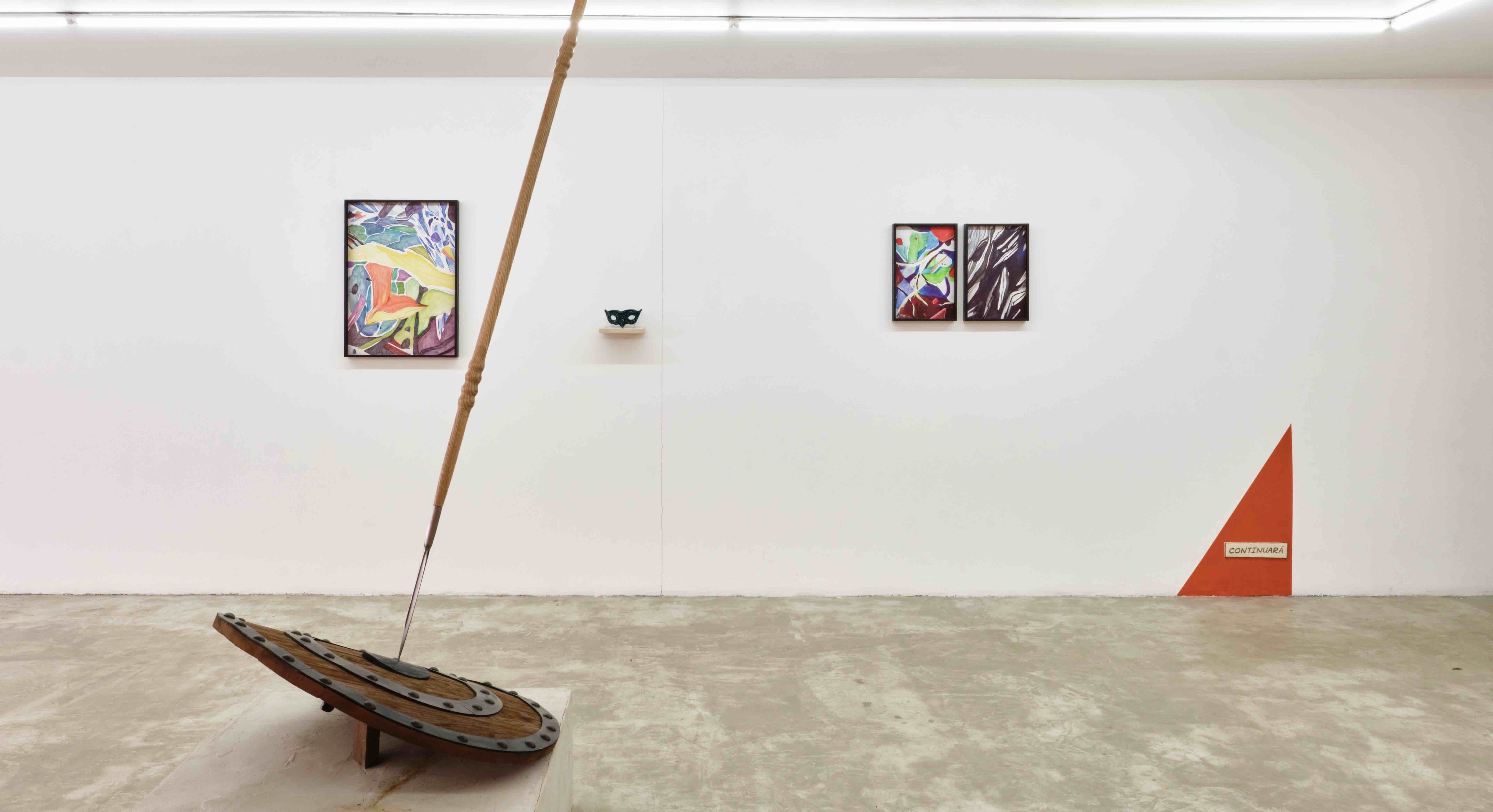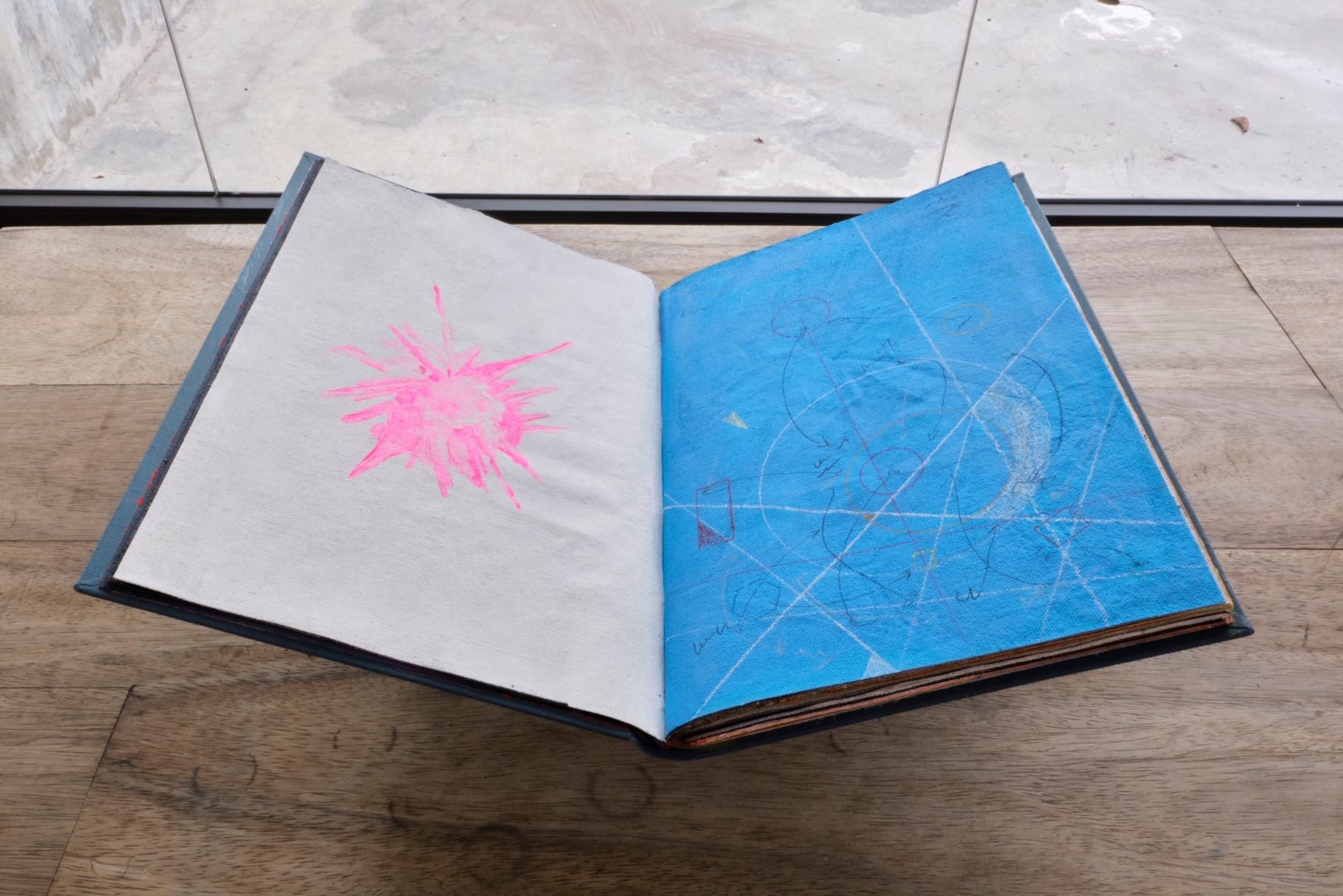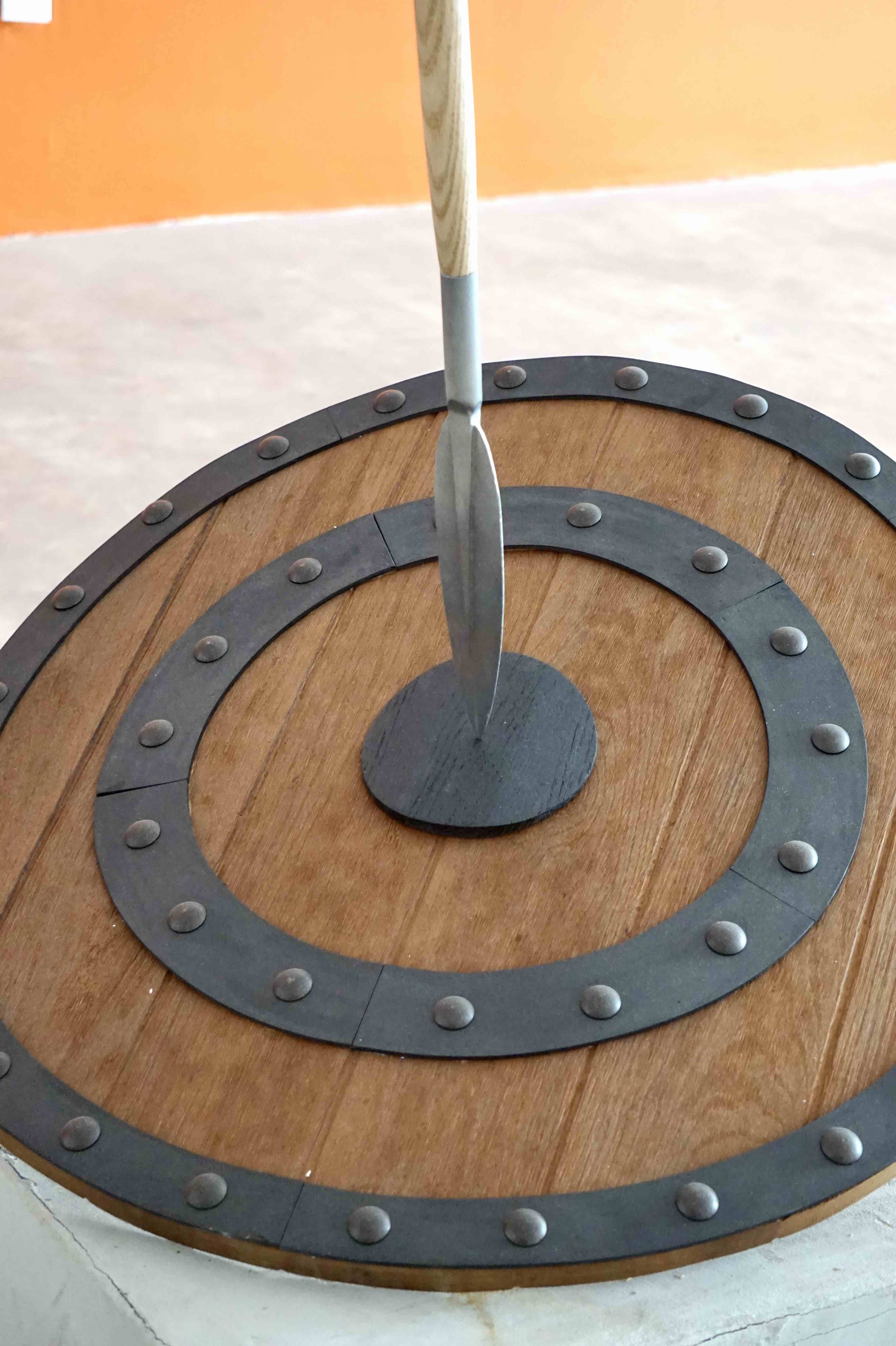
Review
BAAANG! Hiram Constantino at Proyecto Caimán
by Ramiro Ávila
Reading time
3 min
There are theories affirming that the universe originated after a huge explosion. From one moment to the next, what was nothing became everything.
Hiram places his pieces between two points of tension: creation and destruction. He presents us with images that oscillate between the primordial and the exalted.
The pieces inhabiting the gallery belong to different expressions: drawings, paintings, and sculptures.
One of the orange-painted walls tinges the room with a warm light resembling the apocalyptic environments present in the two-dimensional works. In the drawings, the use of colored pencil predominates, and its abstract composition portrays marks transitioning from orange to blue, passing though green and yellow.

On a pedestal there lies a book with pages painted with scenes typical of outer space, and among them there stands out a phrase: “Do not toss away roses for bread,” referring to the habit of seeking a state of well-being through hard work that is mostly all-absorbing, stressful, and reduces time for leisure and relaxation.
The artist relates these contrasting concepts to the dichotomies inherent in other pieces: destruction/reconstruction, death/rebirth. A piece that exemplifies this way of looking is a wooden sculpture that spans from floor to ceiling; a shield with metal trims resists the blow of a spear that stands vertically balanced on its tip.

The spear and shield are like an ouroboros in this narrative. They constantly resist each other in a constant, periodic, and repetitive exchange that gives way to an endless story that is told over and over again.
Within the exhibition we can also find ceramic sculptures in the shape of the lotus flower, and among them there stands out one that looks a little different: on a pedestal, a black lotus extends its tentacles on a bed of ashes; the flora has had to adapt to the scenario of destruction framing it.

Hiram adds to his work elements coming from his love of comics and manga. Beginning with his title, SAGA, he allows us to intuit that the pieces are contained within a narrative that is broken down into chapters.
Something special that happens in reading the comic is that one can take one’s desired time with each panel, thus sinking into the details. In the exhibition the works are also suspended in time and apparently at a crucial point in the narrative.
SAGA is a compilation of the artist’s creative universe that allows us to identify some of his pathways as well as the beginning of new possibilities.
To be continued…
Translated to English by Byron Davies
Cover picture: Photo by Noemí García
Published on May 20 2023